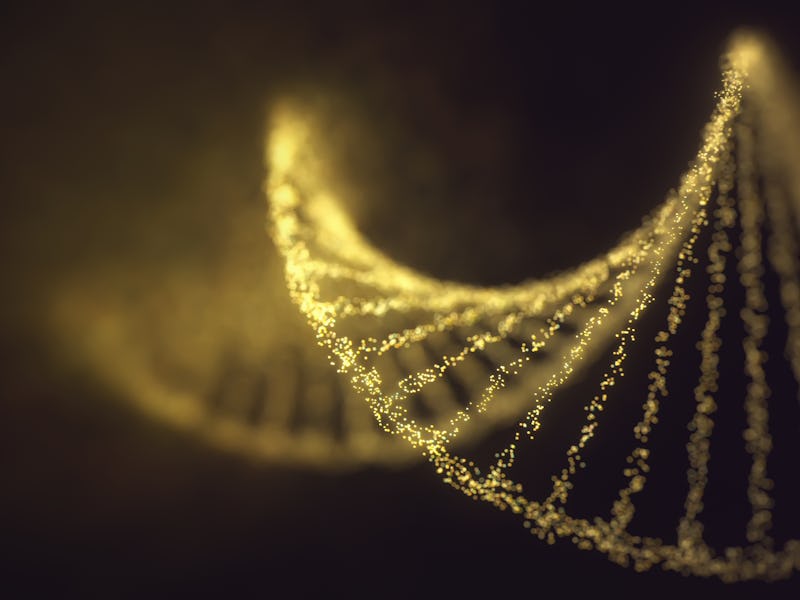One gene could boost plants’ resilience to extreme weather — and store more carbon
Plus: Are quantum computers finally on the horizon?

Plants are truly the Earth’s custodians — as they grow roots into the soil, they take carbon down with them, storing it there. These roots also safeguard the plants’ resilience, insulating the land from the effects of extreme weather, like drought. If roots can grow deeper and steeper, a new paper suggests, they can take carbon down farther and optimize nutrient and water uptake in the plants even more.
What’s new — In a study published in Proceedings of the National Academy of Sciences, researchers announce the discovery of a gene that helps direct plant roots’ direction and depth into the ground below. The discovery could enable engineered crops that harness the gene’s abilities to make the crop plant grow steeper and deeper roots In turn, this would make the crop more resilient to drought caused by climate change, and help to store carbon taken in from the atmosphere further underground.
X-ray micro-computed tomography scan image of Morex (wild-type) and egt1 (mutant) roots in soil, showing major differences in seminal root growth angle. Mutant roots show steeper root phenotype compared to the wild-type.
“Root angle controls how efficiently plants can capture water and nutrients. For instance, shallow roots best capture phosphate which accumulates in the top-soil region, while steeper roots are better for foraging for water and nitrate in deeper soil layers,” Rahul Bhosale, a co-author and assistant professor at the University of Nottingham, says in a statement.
“Steeper roots are also important for helping bury carbon deeper into soil,” he adds.
The discovery — “We have found that mutants lacking function of the EGT1 gene exhibit a steeper growth angle in all classes of roots,” says Haoyu Lou, a co-author on the study and a researcher at the University of Adelaide, in a statement. The gene was discovered in wheat and barley.
“Remarkably, the roots behave as if they are overly sensitive to gravity — they are unable to grow outwards from the plant, and instead grow straight down.”
If farmers were to harness the power of the gene using traditional breeding techniques, they could select plants that show straighter, deeper roots by mapping them using X-Ray technology. Alternatively, crops could be modified to lack a functional EGT1 gene and achieve steeper, deeper, more resilient roots.
On the horizon: A quantum breakthrough?
A cryostat from a quantum computer.
Nature is full of patterns: Jazzy geometrics, sizzling stripes, delightful dots. But none can hold a candle to the rare beauty of the Fibonacci sequence. This is a set of numbers that helps to describe the intricate design of a sunflower’s head or a romanesco cauliflower. It could also help propel quantum computing from remaining largely in theory to being used in reality.
As Rahul Rao reports for Inverse, scientists used a laser to create a new phase of matter that switches states to a Fibonacci-like rhythm in time, like a ticking clock pedulum.
The matter consists of ten ions of ytterbium, a rare earth element quite common in quantum computers, caged in an electric field.
“There are special types of phases of quantum matter which have ‘protected’ quantum information,” says Philipp Dumitrescu, a theoretical physicist formerly at the Flatiron Institute in New York City and the paper’s lead author.
“Those phases of matter can cancel out all sorts of errors.”
That’s what the matter created here may be able to do, the study suggests. Time will tell if the breakthrough leads to a new leap for quantum computing, but it's one of the many intricate steps physicists must take to translate the theory to the real world.
Here’s what else we’re reading...
- A robot broke a child’s finger — and wouldn’t let go — during a chess match, according to the BBC. The incident happened in a match at the Moscow Open between a robot and a 7-year-old boy.
- Who are you: A person who doesn’t want an e-bike or has never ridden one? INPUT might have an alternative.
- A stretch of U.S. 19 may be the deadliest road in the country for pedestrians, reports Vox. If you are a committed city-walker, maybe avoid.
- Is there a reason why taking a vacation from work is so stressful? The Atlantic examines why we have to work so much harder when we take a little time off.
- Making A.I. do more than mimic its human controller is more ethically fraught than you think. Nautilus dives in.
Get the latest innovation news and analysis straight to your inbox.